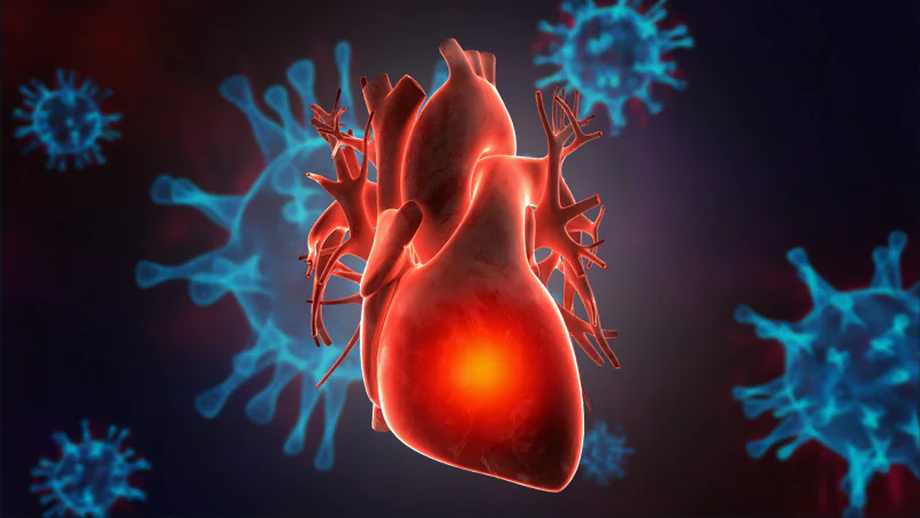A new study from University of California found that teenage boys are more at risk from vaccines than covid; 6 times more likely to suffer from heart problems from the vaccine than be hospitalized from Covid

On June 10, we wrote about the Centers for Disease Control and Prevention (CDC) when the agency announced it was holding an ’emergency meeting” after hundreds suffered rare heart inflammation following Pfizer and Moderna COVID-19 mRNA vaccines.
On the same day, NBC News wrote a piece titled, “Evidence grows stronger for Covid vaccine link to a heart issue, CDC says.” The NBC story provides the missing piece from our story. Citing the CDC, NBC wrote:
“A higher-than-usual number of cases of a type of heart inflammation has been reported following Covid-19 vaccination, especially among young men following their second dose of an mRNA vaccine, the Centers for Disease Control and Prevention said Thursday.”
The heart condition CDC was talking about is called myocarditis, which for the most part is usually mild, but according to the CDC, a handful of patients still remain hospitalized. During a presentation to a Food and Drug Administration advisory group, Dr. Tom Shimabukuro, deputy director of the CDC’s Immunization Safety Office, said that overall, 226 cases of myocarditis or pericarditis after vaccination in people younger than age 30 have been confirmed. He said that further investigation is needed. However, Dr. Shimabukuro also added that “We clearly have an imbalance there.”
Fast forward three months later. A major study from the University of California further confirms the CDC’s story that linked the vaccines to heart issues in teenagers.
Led by Dr. Tracy Høeg at the University of California, the study found that teenage boys are six times more likely to suffer from heart problems from the vaccine than being hospitalized from Covid-19. The study also claimes that healthy boys may be more likely to be admitted to the hospital with a rare side-effect of the Pfizer/BioNTech Covid vaccine that causes inflammation of the heart than with Covid itself.
The researchers also added that children who face the highest risk of a “cardiac adverse event” are boys aged between 12 and 15 following two doses of a vaccine.
The new study, which was published on the MedRxiv website and has yet to be peer-reviewed, Dr. Høeg and colleagues analyzed adverse reactions to Covid vaccines in US children aged 12 to 17 during the first six months of 2021.
They estimate the rate of myocarditis after two shots of Pfizer/BioNTech vaccine to be 162.2 cases per million for healthy boys aged 12 to 15 and 94 cases per million for healthy boys aged 16 to 17. The equivalent rates for girls were 13.4 and 13 cases per million, respectively. At current US infection rates, the risk of a healthy adolescent being taken to hospital with Covid in the next 120 days is about 44 per million, they said.
In a post on Twitter, Dr. Høeg Said, “Our group’s analysis of pediatric post-vax myocarditis rates stratified by age, sex & dose. An extensive harm-benefit analysis is included w/consideration of presence or absence of comorbidities Thanks @drjohnm @KrugAlli & @ifihadastick for the teamwork.”
Our group's analysis of pediatric post-vax myocarditis rates stratified by age, sex & dose. An extensive harm-benefit analysis is included w/consideration of presence or absence of comorbidities
Thanks @drjohnm @KrugAlli & @ifihadastick for the teamworkhttps://t.co/pKDyOjdLTu
— Tracy Høeg, MD, PhD (@TracyBethHoeg) September 9, 2021
The U.K. Telegraph also confirmed the story.
https://twitter.com/Telegraph/status/1436032609033797632
Below is the abstract of the study.
ABSTRACT
Objectives: Establishing the rate of post-vaccination cardiac myocarditis in the 12-15 and 16-17-year-old population in the context of their COVID-19 hospitalization risk is critical for developing a vaccination recommendation framework that balances harms with benefits for this patient demographic.
Design, Setting and Participants: Using the Vaccine Adverse Event Reporting System (VAERS), this retrospective epidemiological assessment reviewed reports filed between January 1, 2021, and June 18, 2021, among adolescents ages 12-17 who received mRNA vaccination against COVID-19. Symptom search criteria included the words chest pain, myocarditis, pericarditis and myopericarditis to identify children with evidence of cardiac injury. The word troponin was a required element in the laboratory findings. Inclusion criteria were aligned with the CDC working case definition for probable myocarditis. Stratified cardiac adverse event (CAE) rates were reported for age, sex and vaccination dose number. A harm-benefit analysis was conducted using existing literature on COVID-19-related hospitalization risks in this demographic.
Main outcome measures: 1) Stratified rates of mRNA vaccine-related myocarditis in adolescents age 12-15 and 16-17; and 2) harm-benefit analysis of vaccine-related CAEs in relation to COVID-19 hospitalization risk.
Results: A total of 257 CAEs were identified. Rates per million following dose 2 among males were 162.2 (ages 12-15) and 94.0 (ages 16-17); among females, rates were 13.0 and 13.4 per million, respectively. For boys 12-15 without medical comorbidities receiving their second mRNA vaccination dose, the rate of CAE is 3.7 to 6.1 times higher than their 120-day COVID-19 hospitalization risk as of August 21, 2021 (7-day hospitalizations 1.5/100k population) and 2.6-4.3-fold higher at times of high weekly hospitalization risk (7-day hospitalizations 2.1/100k), such as during January 2021. For boys 16-17 without medical comorbidities, the rate of CAE is currently 2.1 to 3.5 times higher than their 120-day COVID-19 hospitalization risk, and 1.5 to 2.5 times higher at times of high weekly COVID-19 hospitalization.
Conclusions: Post-vaccination CAE rate was highest in young boys aged 12-15 following dose two. For boys 12-17 without medical comorbidities, the likelihood of post-vaccination dose two CAE is 162.2 and 94.0/million respectively. This incidence exceeds their expected 120-day COVID-19 hospitalization rate at both moderate (August 21, 2021 rates) and high COVID-19 hospitalization incidence. Further research into the severity and long-term sequelae of post-vaccination CAE is warranted. Quantification of the benefits of the second vaccination dose and vaccination in addition to natural immunity in this demographic may be indicated to minimize harm.
2021.08.30.21262866.full